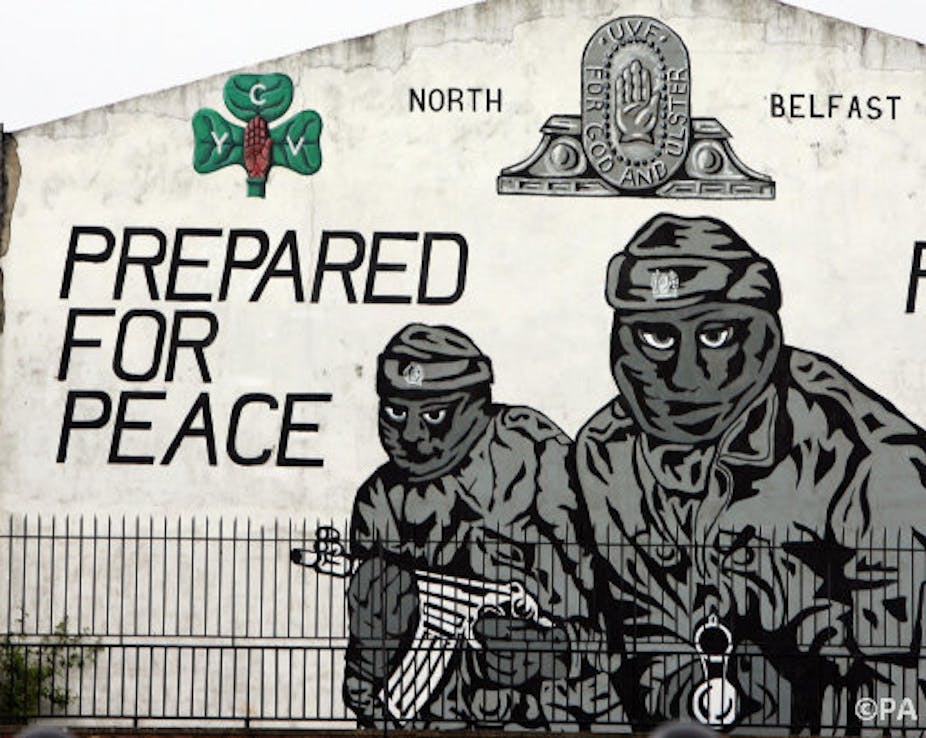One of the more intriguing disclosures brought about by the 30-year release of UK state papers last week was a 1984 proposal to re-partition Northern Ireland. The plan found its way to the desk of then prime minister Margaret Thatcher as a briefing paper drafted by civil servants. The proposal laid out a formula to end the conflict in the region, which by then was in its 15th year.
At heart, the proposal attempted to engineer peace by redrawing borders to “produce a more homogeneous population in Northern Ireland”. This was to be achieved by ceding more than half of the geographical area of Northern Ireland to the Republic of Ireland, thus transferring 500,000 Irish nationalists to the south in the process. Thatcher’s cabinet rejected the suggestion on the basis of impracticality.
The surfacing of this proposal from the vaults of history collides uneasily with Northern Ireland’s present. The revelations coincided with the collapse of proposals designed to resolve outstanding issues of contention between nationalists and unionists.Overseen by former US diplomat Richard Haass, these proposals aimed to tackle ongoing conflict over parades, flags and inquiries into the past. Haass’ failure to forge sufficient consensus for his proposals illuminates the lack of trust continuing to blight Northern Ireland’s fractured polity.
A striking symmetry emerges from the failed proposals of 1984 and those of Haass almost 30 years later. While the 1984 scheme advocated re-partition to create an ethnically homogenous Ulster, Haass’ rejection reveals Northern Ireland’s political elites have chosen one form of partition over another. Contemporary Northern Ireland remains internally divided as the contending groups largely live in separate districts that are often divided by security walls, they send their children to different schools, and they overwhelmingly vote for ethnically-based political parties.
Unmixing peoples
Why has this internal partition occurred? A quick rewind provides some context. The idea to re-partition Northern Ireland represented an old nostrum to resolve ethnic violence. The proposal to “produce a more homogeneous population” eerily echoed Lord Curzon’s infamous suggestion of “ethnic unmixing of populations” as a way of ending violence across the Balkans in the 1920s. Ethnic diversity was viewed as a source of atavistic conflict and the suggested solution involved territorial partition and population transfers.

But it is clear that re-partitioning was not the British and Irish state’s preferred option in 1984. Their inclination was for power sharing between nationalists and unionists with an added British/Irish dimension. The logic of power sharing rests on the premise that ethnic diversity can be peacefully accommodated if the rival groups are provided with representation in government and their distinct cultural identities are recognised in the public arena. In this formula, good fences are said to make good neighbours. Groups can live side by side if they accept the equal validity of each other’s differences. Power sharing, however, had already been tried and ended in 1975 after nationalists and unionists disagreed on its implementation.
Power sharing redux
The 1998 Good Friday Agreement represented the return of power sharing to the region. Nationalists and unionists currently share power in a devolved regional government. This power sharing is a profoundly modern arrangement since it also includes a complex array of cross-border institutions, group rights based on contemporary EU policy and the decommissioning of paramilitary weapons.
Variations of power sharing are seen in a number of divided societies, including Lebanon, Iraq and Bosnia. Seen as a major mechanism for managing conflict, power sharing has been mooted for apparently intractable conflicts such as Syria and Israel/Palestine. Critics of power sharing, however, claim it merely institutionalises ethnic differences and does little to foster a shared society. This scenario seems pertinent to contemporary Northern Ireland, in which separation is often the norm and politics concentrates on minor differences between groups. The current collapse of the Haass proposals is perhaps indicative of this lack of commonality.
But we should not simply damn power sharing as little different from partition. Governments and other agencies commissioned to end conflict face a situation in which ethnic identities have been hardened through violence. In order to abandon violent means, groups typically demand political representation and cultural rights. Power sharing, therefore, provides a realistic system to both end violence as well as abjuring the dubious option of partition.
While Northern Ireland’s political elites continue to flounder over identity politics, they are committed to peace. Moreover, after 15 years of often uneasy peace, there is genuine optimism that the gap between nationalists and unionists over the Haass proposals are small enough that genuine progress can still be made.

